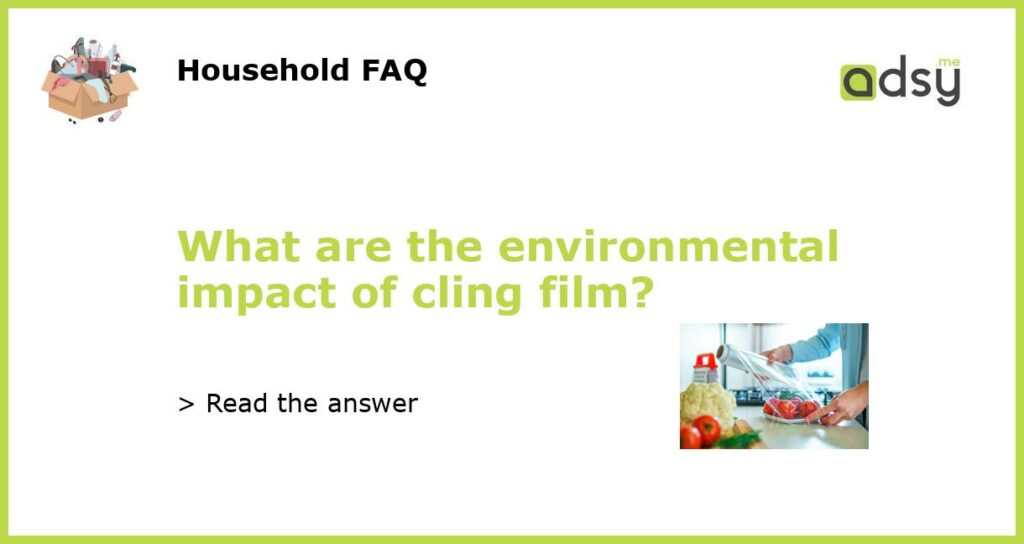The Negative Effects of Cling Film on the Environment
Cling film is one of the most used kitchen items when it comes to food preservation. However, the use of this item can have negative effects on the environment. In this article, we will discuss the environmental impact of cling film.
Plastic Pollution
The most significant impact of cling film on the environment is plastic pollution. Cling film is made of plastic, and when it is discarded, it can take hundreds of years to degrade. The plastic will end up in landfills or in oceans, causing harm to marine life and the ecosystem. Plastic pollution is also a significant contributor to climate change, as it releases harmful greenhouse gases when it breaks down.
Non-Recyclable
Cling film is not recyclable, which makes it an even bigger problem. Once it has been used, it cannot be recycled, and it will take hundreds of years to degrade, as we mentioned previously. The best way to dispose of cling film is to put it in the trash, but even then, it can cause harm to the environment.
Harmful Chemicals
Cling film contains harmful chemicals that can be dangerous to our health and the environment. One of these chemicals is Bisphenol A (BPA), which has been linked to cancer, infertility, and other health conditions. BPA can also leach out of the cling film and into our food, causing further health concerns.
Energy Consumption
The production of cling film requires a significant amount of energy. The plastic used in cling film is made from oil, which is a non-renewable resource. The production process requires a lot of energy and produces harmful greenhouse gases. This means that the use of cling film contributes to climate change and environmental degradation.
Alternatives to Cling Film
There are eco-friendly alternatives to cling film that can help reduce the environmental impact. Beeswax wraps and silicone lids are two examples of alternatives that can be reused multiple times, reducing waste. Glass containers with lids can also be used to store food in the fridge or freezer.
In conclusion, cling film has a negative impact on the environment due to plastic pollution, non-recyclability, harmful chemicals, and energy consumption. It is essential to reduce our reliance on cling film and use eco-friendly alternatives to preserve our food and reduce our impact on the environment.






